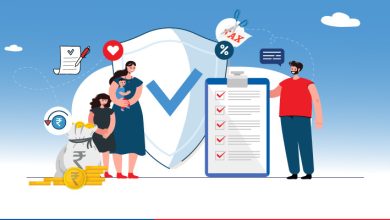Going Digital With Your Savings: Is It the Smarter Choice?

Managing money has come a long way from waiting in queues and filling out forms. Today, more people are turning to digital savings accounts—and for good reason. With just a few taps on your screen, you can open an account, track your money, and take care of everyday banking. But is it the more intelligent choice? Let’s take a closer look.
What Is a Digital Savings Account?
A digital savings account works just like a traditional one, but it’s built for online use. That means you don’t need to visit a bank branch to open or manage your account. Everything is done through a secure website or app, from verifying your identity to transferring funds.
The best part? You can open one from the comfort of your home, often in just a few minutes. There’s no paperwork, no long queues, and no pressure to make a trip to the bank.
Why Many Prefer Going Digital
Here are the key reasons why many prefer digital savings accounts:
- Convenience at Its Best: Whether you’re at home or travelling, your account is always accessible. You can pay bills, check your balance, or send money without any delays.
- No Paperwork: Everything is done online. That means no forms to fill, no printouts, and no courier services. It’s all handled digitally, saving both time and effort.
- Added Benefits: Digital accounts often come with useful features like free debit cards, accident insurance, easy investment options, and bill payment tools—all in one place.
- Safe and Secure: Online savings accounts follow strict security protocols. You’ll get OTPs for transactions, real-time alerts, and encrypted sessions to protect your data.
How It Works: A Quick Overview
Opening a digital savings account in 2025 is fast and straightforward. Here’s how it usually works:
Step 1: Start Online
Visit the official website or app and look for the option to open a savings account.
Step 2: Enter Your Details
You’ll be asked to share basic information—like your name, phone number, and proof of identity. You’ll also choose the account type that best fits your needs.
Step 3: Fund Your Account
To activate your account, you’ll make an initial deposit. This can often be done through UPI, internet banking, or a debit card.
Step 4: Complete a Quick Video KYC
The final step is a short video call with a representative to verify your documents. Once that’s done, your account is ready to use.
Is It for Everyone?
A digital savings account is a good fit for those who prefer handling finances online. It’s beneficial for people with busy schedules, students, working professionals, or anyone who values time and flexibility.
However, if you’re someone who still prefers face-to-face interactions or needs help with digital tasks, it might take a little time to get used to the online setup, but it will give you all the convenience needed.
Final Thoughts
Digital savings accounts have made banking simpler, faster, and more accessible. While they may not be the perfect fit for every individual, the growing shift towards digital banking shows a clear trend—people want more control with less hassle.
If you’re comfortable using a phone or laptop for everyday needs, going digital with your savings could be a smart, practical move.





